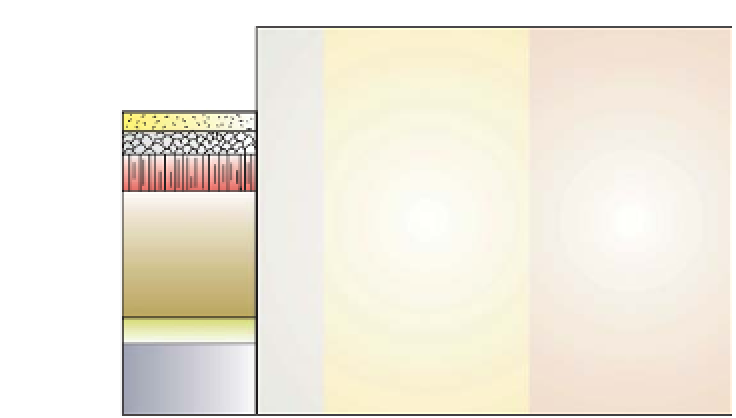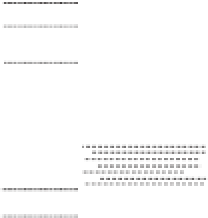Geology Reference
In-Depth Information
Norrnal Ocean Crust
Typical Ophiolite
Ocean
Crustal
Layers
P-wave
velocity (km/s)
P-wave
velocity (km/s)
Thickness (km)
Thickness (km)
Sediments
Pillow lavas
Sheeted
dykes
1
2A & 2B
2C
~0.3
0.5
1.0 - 1.5
0.5
0.5
1.5
1.7 - 2.0
2.0 - 5.6
6.7
3.3
4.1
3A
Gabbro
4.7
7.1
2 - 5
5.1
3B
Layered
gabbros
Layered peridoties
4
2.5 - 4.2
<7
8.1
Upper Mantle
Figure 8.9
Comparison of ophiolites and normal ocean crust in terms of real
and preserved thicknesses and P-wave velocities (used in seismic).
field by the presence of deformed and fragmented ultramafic rocks within the
ophiolite, overlying, usually with sharp petrological and structural contrast, the
local crustal rocks.
The
basal sequence
, itself the most variable in thickness, ranging up to 10 km
normal to the dip of the base, may comprise generally unlayered mixtures of
serpentinised peridotites, usually with strongly-deformed, 'tectonised' fabrics,
but sometimes including zones of recognisable dunite and harzburgite. These
rocks are interpreted as a '
mantle sequence
' from which the partial melts that
formed the overlying (ocean crustal) layers have been extracted (Figure 8.10).
Overlying the mantle sequence, there are usually several kilometres thick-
ness of
layered mafic-ultramafic rocks
, resembling those of layered lopoliths (for
example, Figure 8.11). Near the base, cyclic successions of dunites, wehrlites
and other peridotites or pyroxenites may occur and there is often evidence that
repeated influxes of magma at different levels within the layered sequence each
generated a cyclic unit. Thus, whereas the majority of the layered sequence
comprises interlayered gabbros, norites and olivine gabbros, with increasing
amounts of leucogabbro and anorthositic material towards the top of the layered
sequence, parts of the sequence may be repeated due to multiple intrusion. The
white 'anorthositic' rocks of ophiolites are usually rich in sodium-rich plagio-
clase feldspar and some of them contain substantial amounts of quartz (up to
30%), so that the term
plagiogranite
is more appropriate. The layered sequence
is usually interpreted as representing an ocean crustal magma chamber which, in
the same way as it received successive magma batches, gave rise to the overlying
dykes and lavas by venting and emplacement of magma from its upper surface.























